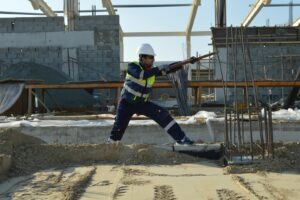The links between poverty and place are revealed in a three-year study by the Joseph Rowntree Foundation. JRF programme manager Alison Jarvis explains its importance
I live three miles from my birthplace, round the corner from my sister, a short car ride from my mum and within walking distance (in nice weather!) of my childhood address. I moved – briefly – for higher education, but I came home; I can totally relate to attachment to place.
I’ve known poverty, but I’ve had a lot of luck in my life journey. My parents’ (council) house was in a relatively affluent suburb; I went to a good (state) school. Today I live in a (pretty) village from which I can readily commute to my (satisfying) job. What might things have been like if fate hadn’t smiled on me so much yet I’d still had the same strong commitment to my locality?
A new JRF report and exhibition explores how communities’ distinctive socio-cultural and historical features impact on people’s experiences and perceptions of poverty. Based on three years of in-depth study into six low-income neighbourhoods across Britain, people’s stories have been captured in words, voices, images and film. So what do these tell us?

Hillside social housing estate in Knowsley on Merseyside, one of six low-income neighbourhoods studied in JRF’s research
Well, first that a neighbourhood’s historical narrative and collective experiences do matter and can be a key driver of its present dynamics. Industrial restructuring, patterns of residential settlement, geographical permeability or self-containment; all provided for a distinctive identity that had been and was being developed over time. And in those neighbourhoods whose economic prospects were most challenging, people’s sense of belonging was particularly strong.
While values, priorities and lifestyles varied and sometimes conflicted, traditional principles – hard work, thrift, independence – are alive and kicking. People had a sense of agency, comparing themselves not to ‘others’, but rather to their own choices and circumstances over time. Family was to the fore in many accounts of achievement or self-doubt, but people’s stories also spoke of adding value to wider society, albeit contributions that might be made outside of the formal labour market.
An issue of importance to a lot of people at the neighbourhood level is the availability and desirability of local facilities and meeting places. While some were keen to avoid the social contact with fellow-residents such public spaces facilitated, others depended upon it. And from either perspective, these spaces had value beyond their utility; they were seen as key signifiers of neighbourhood wellbeing.
People’s stories also showed the sheer relentlessness of living with, or close to, circumstances of poverty. For those whose income had risen from one wave of interviews to the next, there was still a sense that the wolf was not far from the door. In this uncertain world, one source of continuity and community stability was to be found in social housing.

So what do these narratives mean for the policy world? Do they support or refute the assumptions often made? The answer, perhaps predictably, is both.
Certainly, when seeking to intervene in deprived neighbourhoods, policy should recognise their distinctive social and cultural histories. Top-down templates are unlikely to find local traction; localism in this sense is to be welcomed. But without input of resources to even the playing field, places with weak labour or housing markets may not see much improvement in conditions, and will not narrow any gaps.
Policy should be wary of assuming that people with low incomes have time on their hands. They are already doing Big Society. State and voluntary sector support enmeshes with informal help and family input to create the conditions through which they can get by. Policy will miss the reality if it sees these sources of help as alternatives.
Measures to make work pay will find resonance in disadvantaged neighbourhoods. But policy has tended to avoid the really hard questions, like what to do in areas facing long-term systemic decline, where poverty is entrenched but is not about fecklessness or irresponsibility but rather about attachment to places whose economic reason for being has passed.
Radical thinking is needed; who is doing it?

- Photographs were taken by Andrew Robinson as part of JRF’s research. More pictures and short films taken in three low-income neighbourhoods are available here: http://tinyurl.com/6jkvt4h


















Leave a Reply